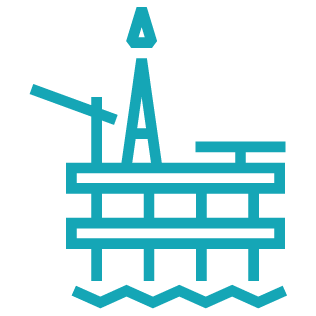You know how it’s done. Every article you read about cybersecurity tries hard to scare you with the potential for drastic financial and operational loss. This isn’t one of them.
All the drama was certainly justified during the many years when management appeared to think that cyber risks were someone else’s problem. But here’s some surprising news: the scare tactics seem to have worked.

Better Cybersecurity is Getting Results
A May 17 article in The Economist noted that the economic impact of major cyber incidents is falling. Professor Tom Johansmeyer of the University of Kent – a former senior executive at Verisk, an insurance-data firm – has found that 92% of total economic losses from cyber catastrophes came before 2009. The peak year was 2003 and in the years since then, real losses have plummeted.
Why? Because management teams, insurers and regulatory bodies began taking cyber threats with increased seriousness. In July 2024, shipping companies, ship managers and offshore vessel operators will get a fresh opportunity, when new regulations will go into force: the IACS UR E26 covering cyber resilience of ships, and UR E27 for cyber resilience of systems and equipment.
Focus of New Regulation
The regulations focus on newbuilds that begin construction in or after July 2024 within certain classes: commercial ships of more than 500 gt designed for international voyages; passenger vessels carrying more than 12 people; and drilling rigs and self-propelled units working offshore. They create new requirements for ship design, construction commissioning and operations. Ship owners will need to keep documentation up to date for the life of ship operations, especially when vessels are put through retrofits or upgrades.

Hear It from the Experts
Speedcast hosted a recent webinar on the new regulations with Riviera Maritime Media to give ship owners and managers an overview of July’s new requirements. The session featured panelists including a cyber security expert from RINA, which provides quality assurance and certifications for the global shipping industry, and Stena Rederi’s Risk and Compliance Manager and OT Security Officer to bring insights from the customer community.
The webinar was rounded out by the COO at Cydome, a leader in maritime cyber compliance solutions, and Speedcast’s product director, with long-standing expertise across the broader maritime sector.
Speedcast’s panelist, Sandro Delucia, noted how advances in maritime connectivity, notably Starlink and OneWeb, have the potential to expose ships to the same threats posed by the internet on land. That’s why Speedcast’s SIGMA ecosystem incorporates remote edge devices at critical junctions to provide enterprise-grade security and virtual network functions.
Adding to the capabilities of Speedcast’s SIGMA platform, Cydome enhances the enterprise-grade SD-WAN technology, ensuring high uptime and bandwidth optimization. It also enables running customer applications in on-network virtual machines for optimal performance, along with providing staff and crew entertainment applications. Cydome operates on SIGMA hardware installed onboard, at fleet headquarters, and customer-managed virtual machines. This value-added service will soon be available as a native virtual machine service within the SIGMA platform.
Organizations face the constant challenge of navigating the complex cyber regulatory landscape while staying ahead of evolving threats. Compliance with diverse regulatory requirements becomes increasingly difficult due to varying guidelines and standards. To address these challenges, organizations require an advanced cybersecurity solution like Cydome. By automating threat detection, streamlining incident response, and providing real-time insights, This empowers security practitioners to proactively tackle cyber threats. Additionally, its built-in compliance features automate assessments, maintain audit trails, and ensure adherence to regulatory obligations. With Cydome, organizations efficiently manage security, compliance, and the ever-changing cyber landscape, enabling them to protect their systems and stay ahead of potential risks.
Smart technology, strong regulation and effective compliance are doing their jobs, both on land and at sea. Cyber risk once seemed limitless and without a cure. But it is turning out to be much like the risks of every voyage: manageable, as long as vigilance never ceases.



























